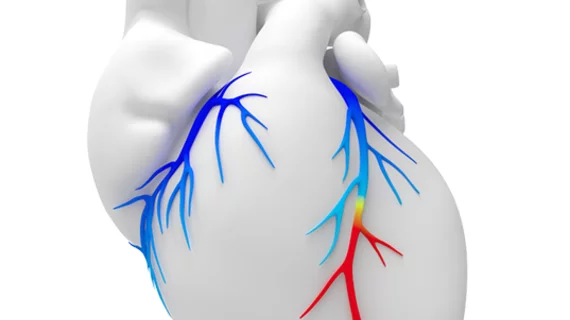Positron emission tomography/computed tomography (PET/CT) shows a strong correlation between severe obstructive sleep apnea (OSA) and impaired coronary flow, making it an important tool for helping to avert cardiac complications that occur when OSA is left untreated, according to research presented this week at the 2019 annual meeting of the Society of Nuclear Medicine and Molecular Imaging (SNMMI) in Anaheim, Calif.
Ruonan Wang, MD, of Shanxi Medical University in Taiyuan, China, and colleagues observed that impaired coronary flow is an early sign of atherosclerosis, while OSA—which is increasingly recognized as a cardiovascular disease risk factor—occurs in individuals whose breathing stops intermittently during sleep because of a blocked airway. Without treatment, OSA can lead to high blood pressure, stroke, chronic heart failure and other cardiovascular problems, they noted.
The researchers hypothesized that PET/CT could be used as a noninvasive means of evaluating coronary microvascular function in OSA patients in an effort to identify those who might later present with cardiovascular complications caused by airway obstruction and poor breathing while sleeping.
For the study, they divided 38 patients into three groups (those with mild OSA, moderate OSA, and severe OSA) and conducted 13N-ammonia PET/CT imaging on each subject. Each patient’s myocardial blood flow and coronary flow reserve were then automatically calculated using quantitative PET/CT software.
Patients in all three groups were found to have a similar mean resting myocardial blood flow, as well as a similar mean hyperemic myocardial blood flow. However, the research revealed a gradual decrease in subjects’ blood flow as the severity of their OSA increased.
Significant differences in the mean coronary flow reserve among patients in the three groups were also noted; those with severe OSA had a substantially lower coronary flow reserve than those with mild or moderate OSA.
Based on these findings, the researchers concluded, PET/CT should be used to assess the likelihood of complications from OSA.
“As we all know, impaired coronary flow reserve is an early sign of atherosclerosis,” Wang said in a prepared statement. “Our study suggests that patients with OSA, especially severe OSA, should receive PET myocardial perfusion imaging as early as possible to exclude coronary microcirculatory dysfunction.”
